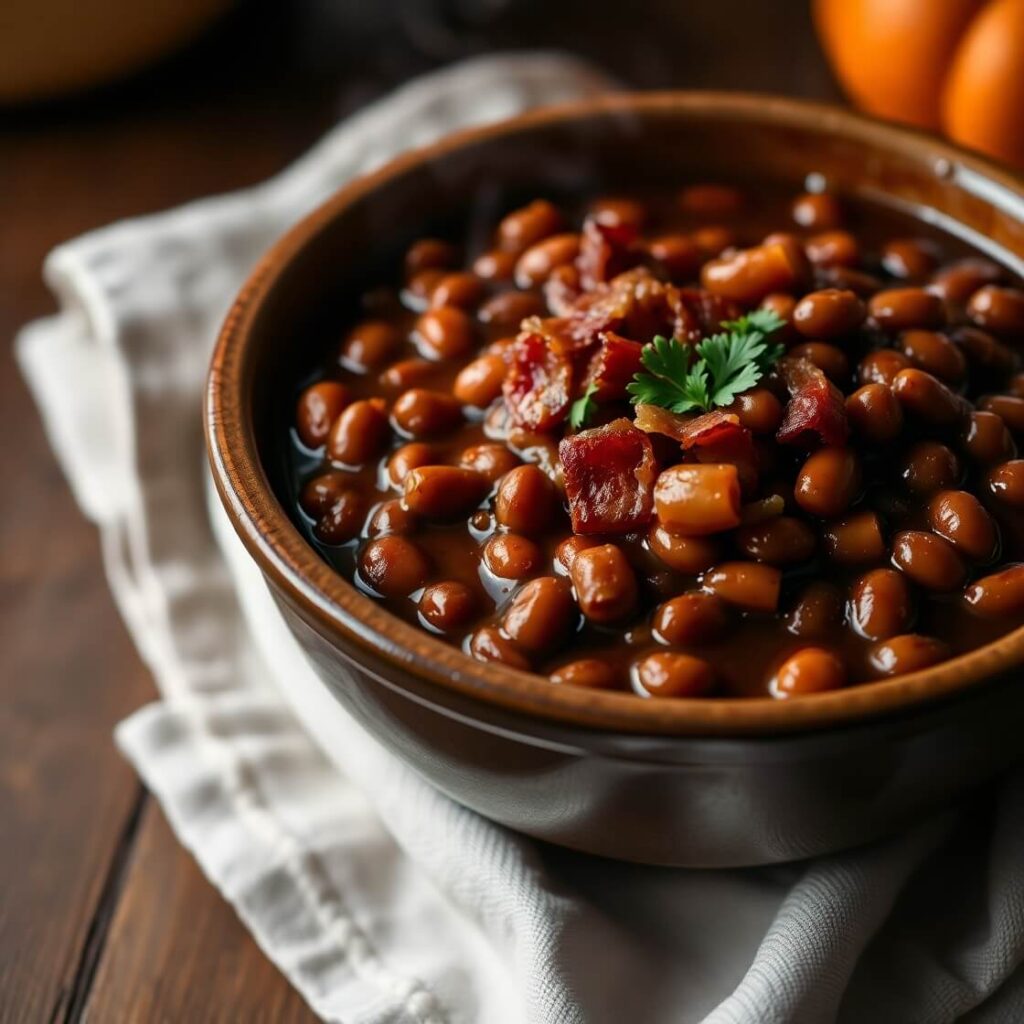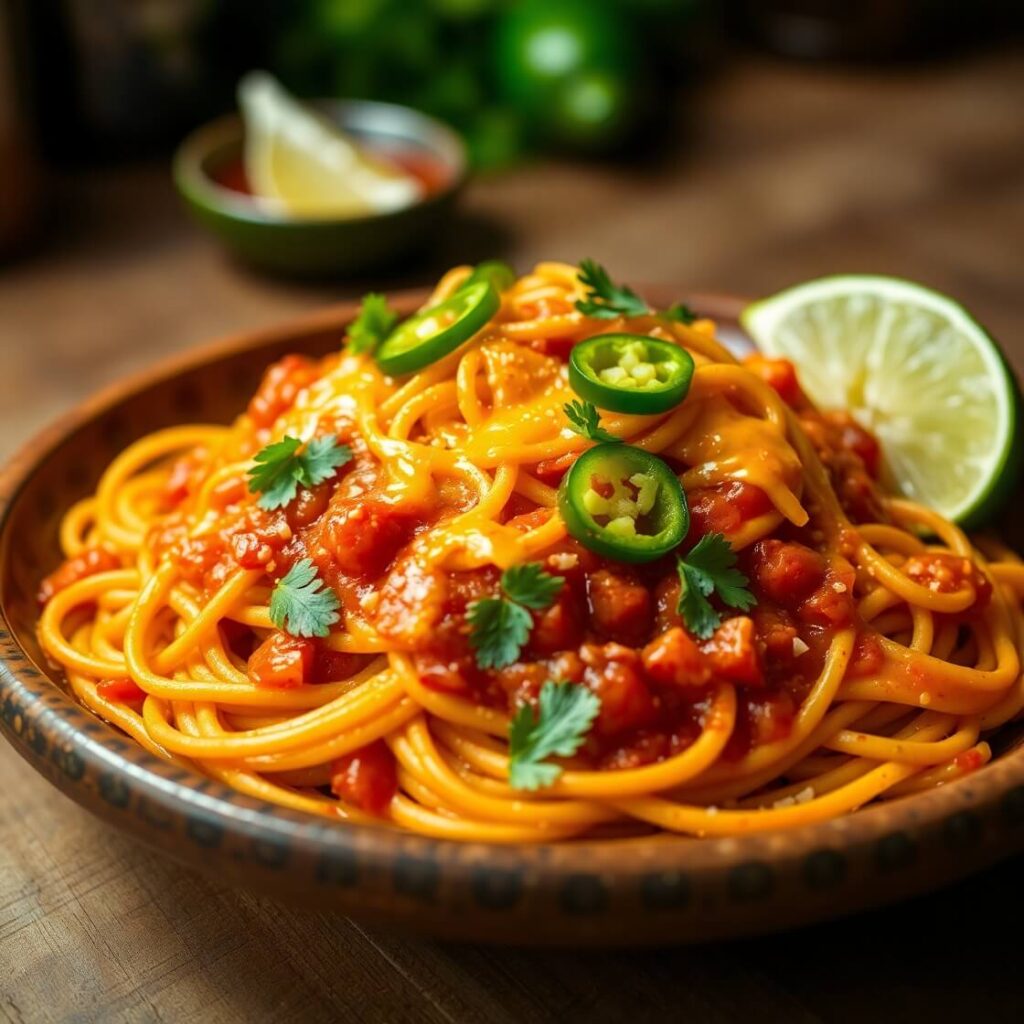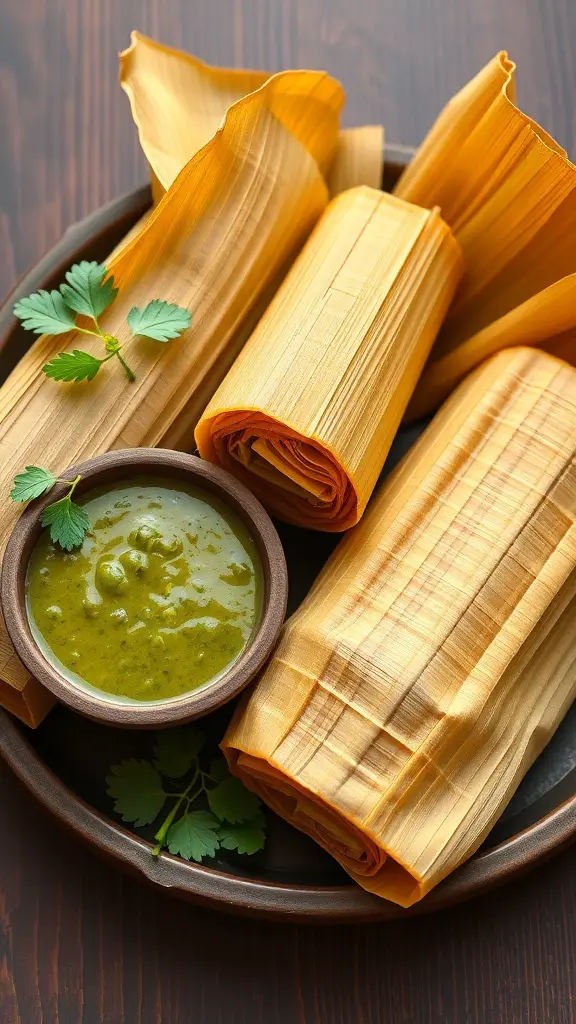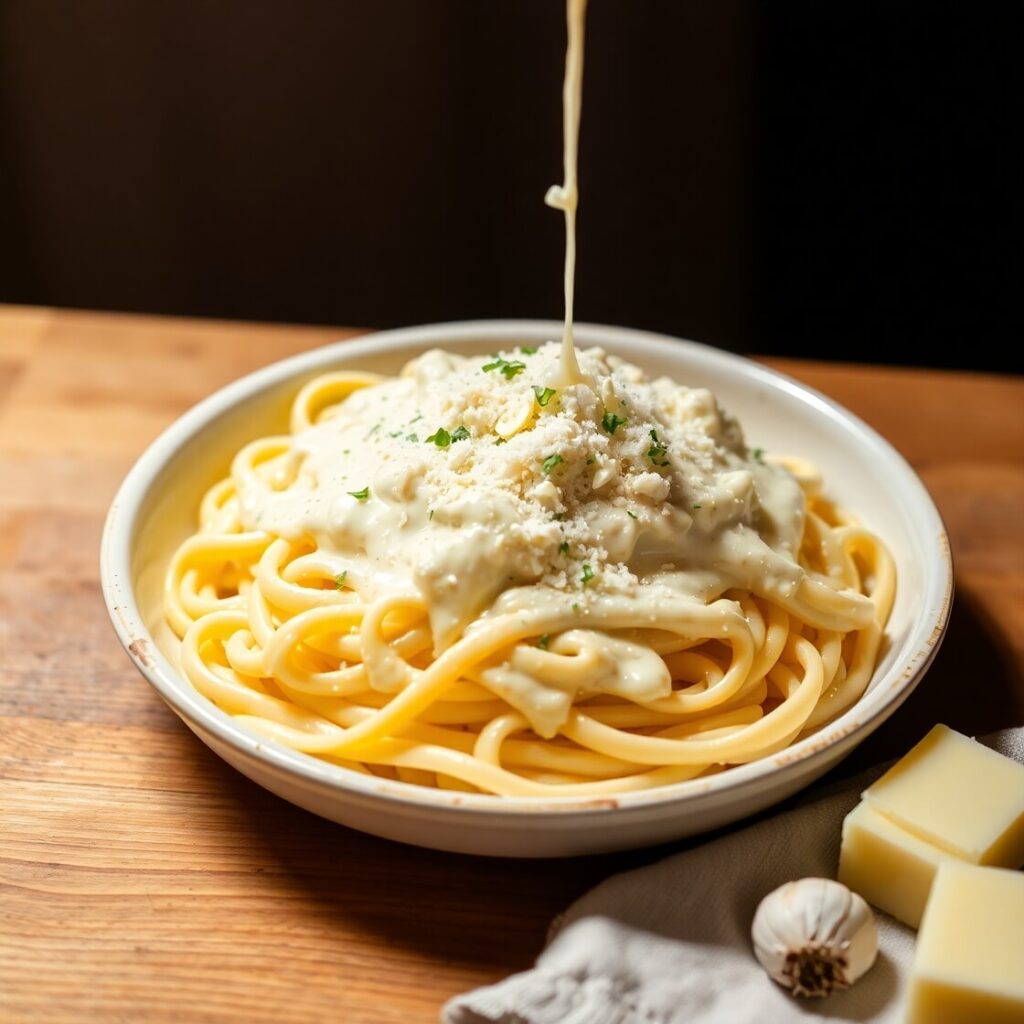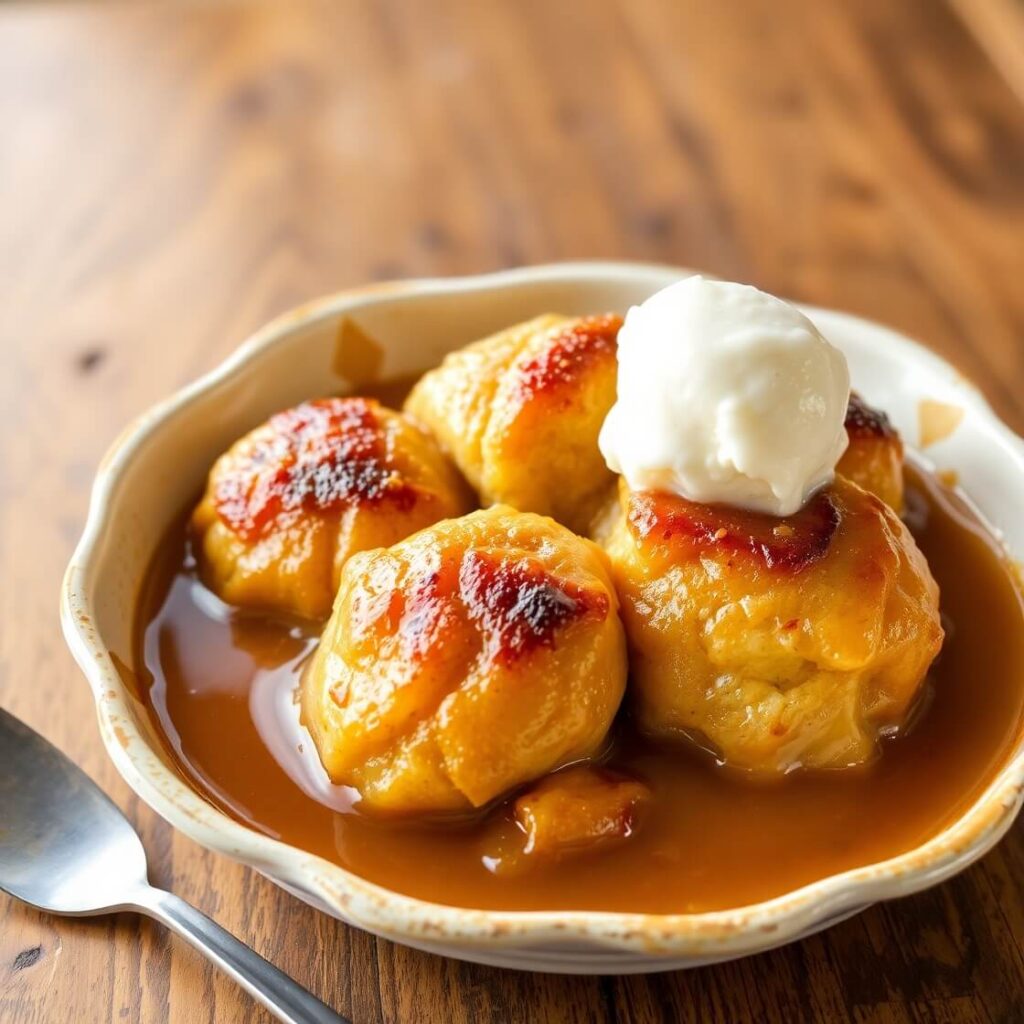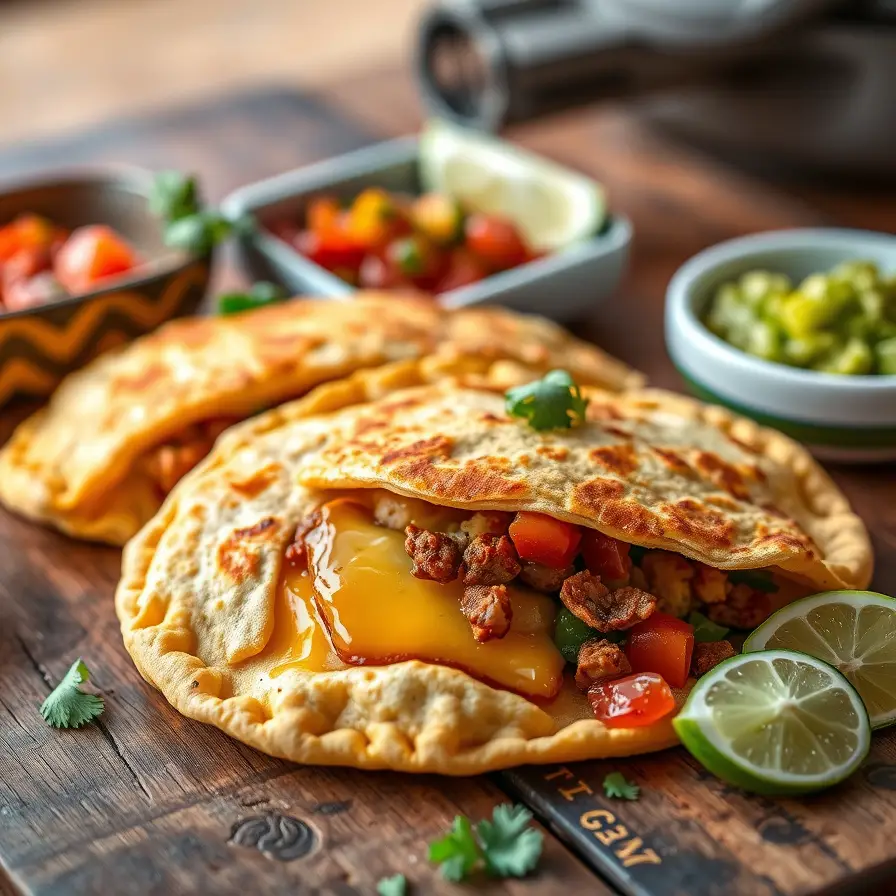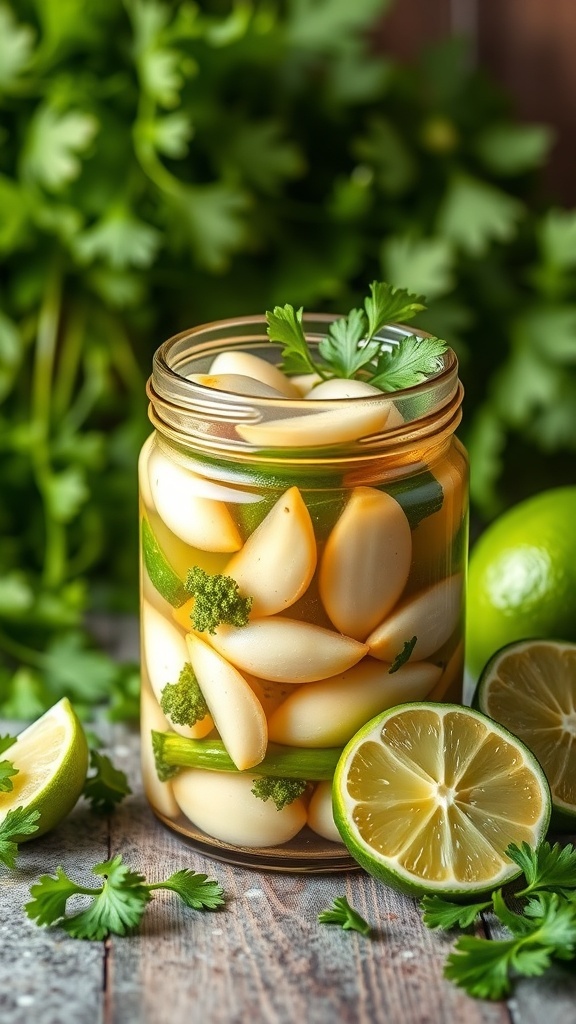Baked Beans Recipe (the Best Ever)
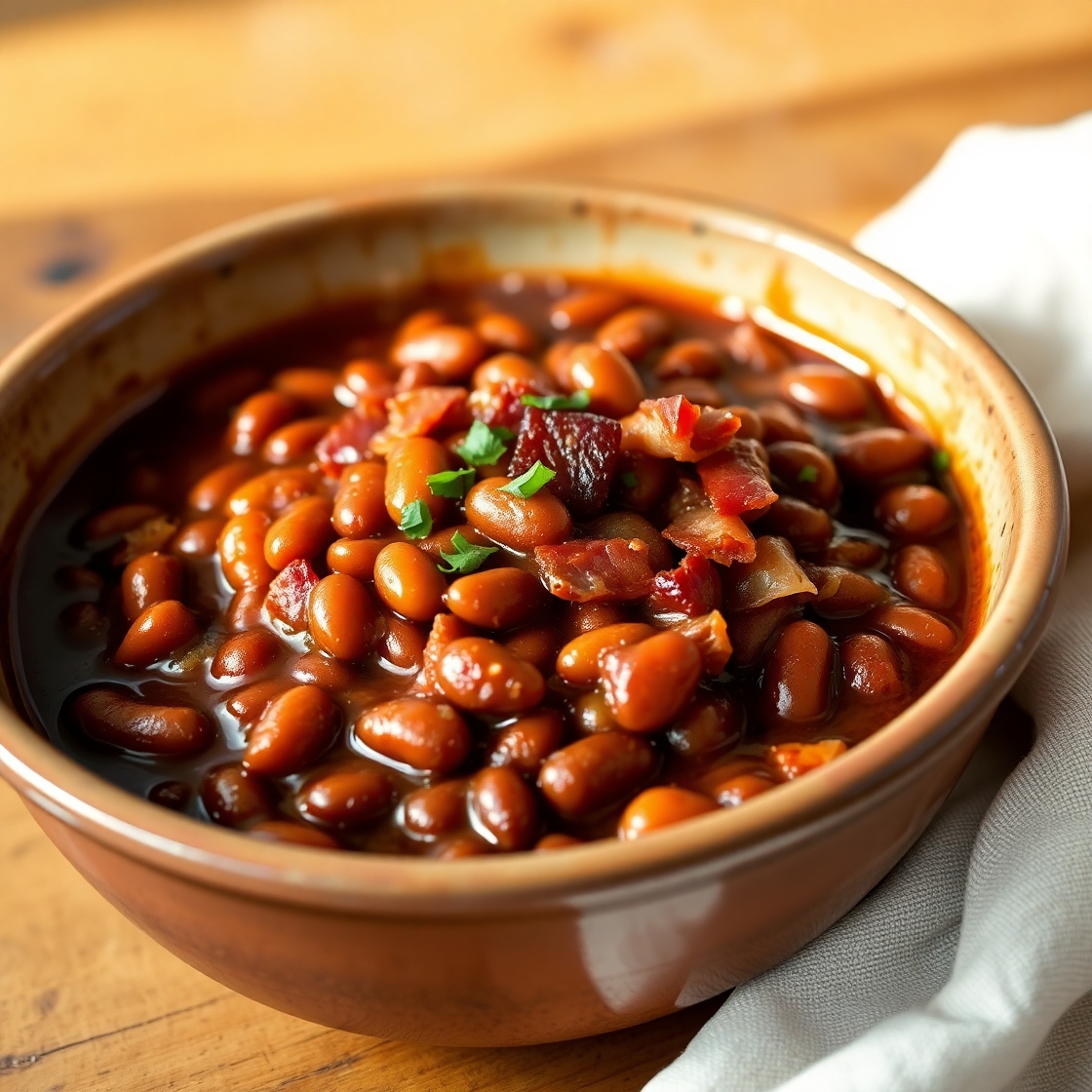
I’ll never forget the first time I made baked beans from scratch. It was a crisp fall Sunday, and the air smelled faintly of fallen leaves and wood smoke from a neighbor’s fireplace. I had just picked up a bag of dried beans at the farmers’ market and thought, “How hard could it be?” Spoiler: harder than I imagined—but worth every minute.
My family gathered around the kitchen table, curious about my ambitious “from-scratch” plan. My youngest peeked over my shoulder, wide-eyed, asking why the beans weren’t already in a can. There’s something magical about watching humble ingredients transform slowly into a fragrant, caramelized dish. That first batch did burn slightly at the edges, but the aroma filling the kitchen made everyone forgive my rookie mistake. From that day on, fall Sundays meant baked beans bubbling away in the oven, and our kitchen became the coziest corner of the house.
Why I Love Making Baked Beans in Autumn
There’s a reason I reserve this recipe for the cooler months. The sweet molasses, smoky paprika, and gentle simmer of the beans pair perfectly with the crisp air outside. The warmth of the dish wraps around you, almost like a hug, and it’s just begging for a side of crusty bread and a steaming mug of cider. I’ve found that making them during the holidays also sparks little traditions—my kids sneaking tastes from the spoon, my spouse stirring in extra brown sugar, and the soft chatter of family gatherings while the kitchen smells divine.
Ingredients in Context
Beans: Dried navy beans are my go-to. Pinto or cannellini work too if you prefer a different texture. Soak overnight for even cooking and to help the beans absorb flavor.
Sweetness: Molasses and brown sugar add rich, earthy sweetness.
Tang: A splash of apple cider vinegar brightens the sauce.
Smokiness: Smoked paprika or liquid smoke delivers depth without a smoker.
Aromatics: Fresh garlic and onion are essential—they fill the kitchen with irresistible aroma.
From Scratch vs. Canned: Canned beans save time, but dried beans reward patience with deeper flavor.
Optional Heat: A pinch of cayenne or chipotle powder adds subtle warmth and a cozy kick.
How to Make Baked Beans
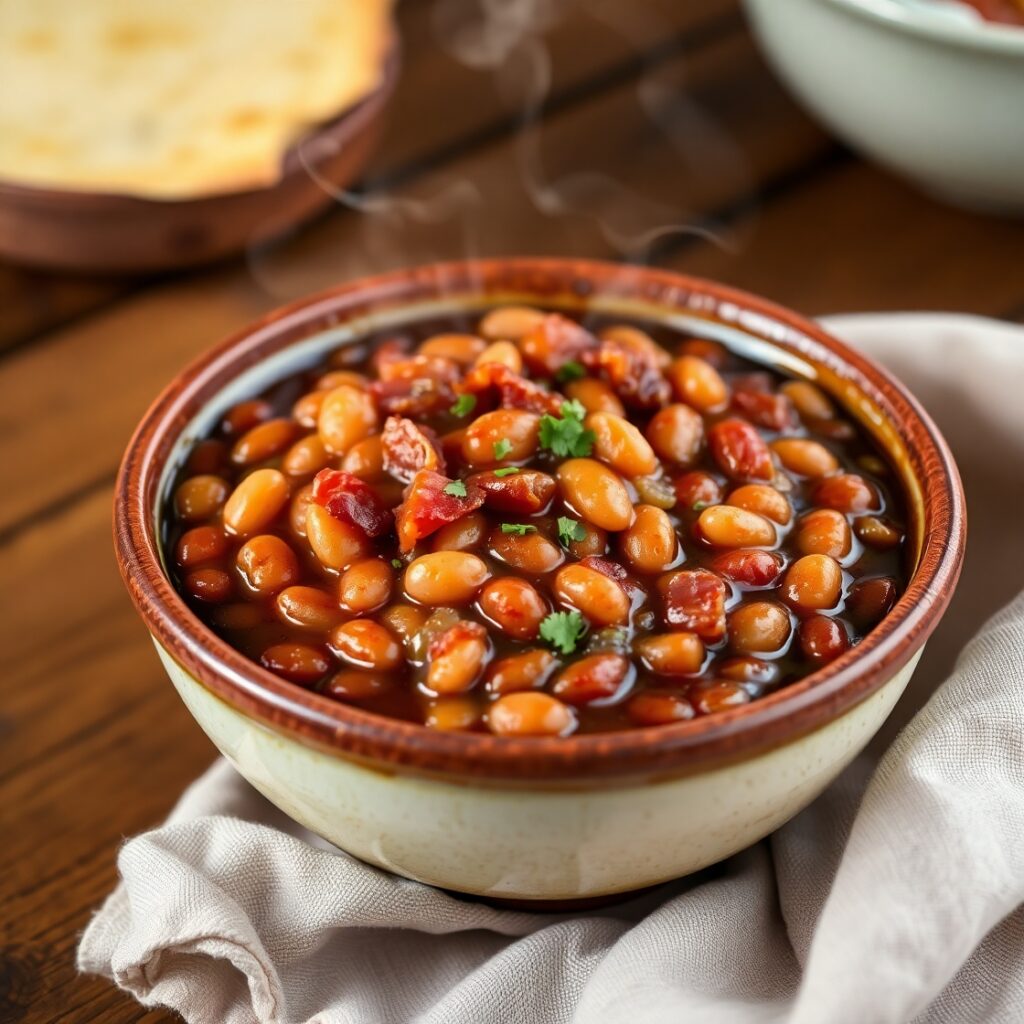
Start by soaking your beans overnight in cold water. The next morning, drain and rinse them well. Place them in a large pot, cover with fresh water, and bring to a gentle boil. Simmer until tender but still holding shape—about 45–60 minutes.
While the beans cook, prepare the sauce. In a skillet, sauté onions and garlic until fragrant, then stir in tomato paste, molasses, brown sugar, mustard, smoked paprika, and a splash of apple cider vinegar. Let the mixture bubble gently for a few minutes to marry the flavors.
Once the beans are tender, drain them, reserving a cup of the cooking water. Combine the beans with the sauce, adding reserved water gradually until you reach a thick, saucy consistency. Transfer everything to a baking dish and bake at 350°F for 45–60 minutes, stirring halfway through. The sauce should thicken, coat the beans beautifully, and caramelize slightly at the edges.
You’ll know they’re done when the beans glisten in a rich, dark sauce, and the aroma makes it impossible to wait any longer. A wooden spoon test helps—you want a slight bite, not mush, and a sauce that clings to the beans without being soupy.
Storage & Make-Ahead Tips
Baked beans improve even after a night in the fridge. I often make a double batch and store half for weekday dinners. Keep them in an airtight container for up to 4–5 days, or freeze in portions for up to 3 months. Reheat gently on the stove, adding a splash of water or broth if the sauce thickened too much.
This make-ahead approach has saved me more than once when unexpected guests showed up. The smell wafting from a reheated batch is just as inviting as fresh from the oven, and somehow, the flavors taste even more melded together.
Pro Notes & Mistakes to Avoid
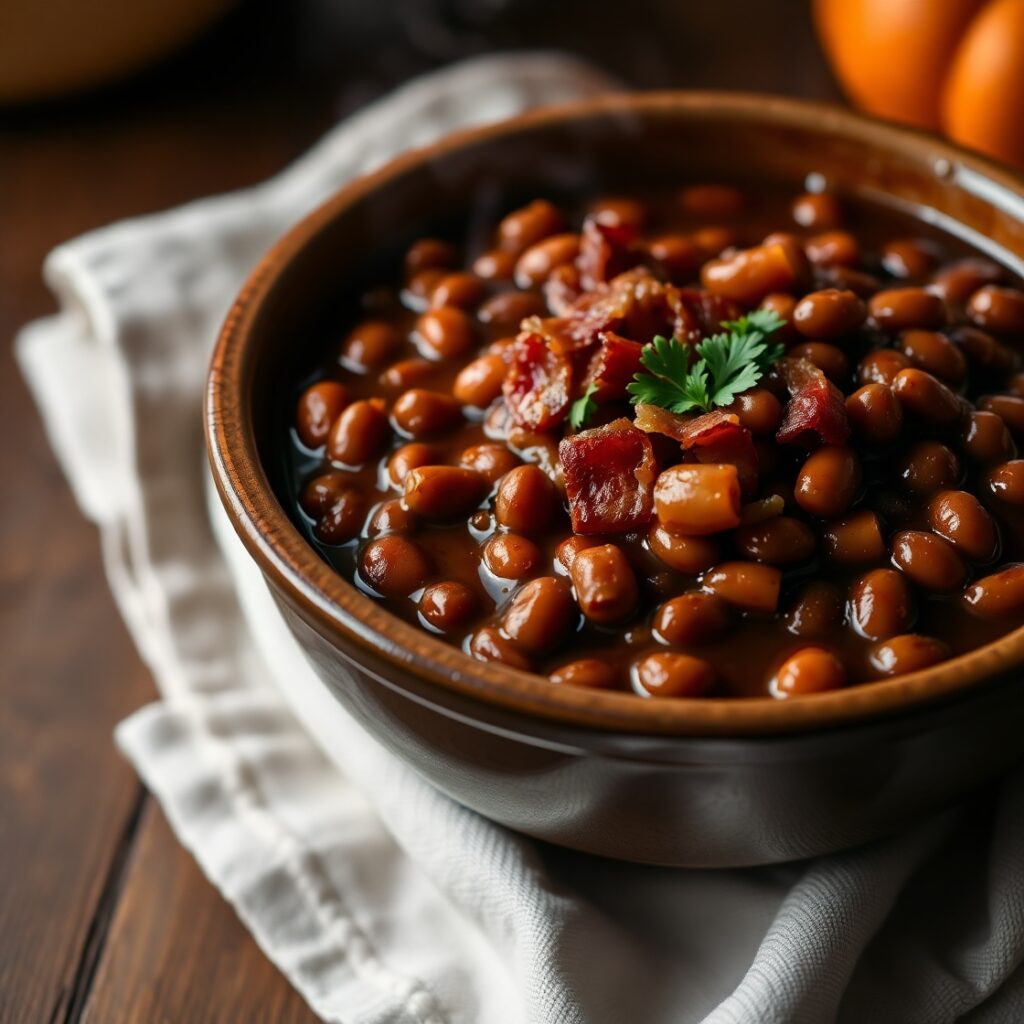
I’ve learned a few things the hard way while making baked beans over the years. The first and most common mistake? Not soaking the beans long enough. I once tried to rush it by using hot water for a quick soak, and half of the beans turned out hard as pebbles. The moral: patience pays. Overnight soaking is worth every extra hour.
Another tip is to resist over-stirring while baking. Those early caramelized edges are golden nuggets of flavor, and constant stirring can prevent that. I remember my first batch—so eager to check on them, I stirred every ten minutes, and the beans came out more stew-like than baked. Now, I give them room to bubble gently, and the result is that perfect mix of tender beans and sticky sauce.
Adjusting sweetness and acidity is another key point. I always taste before baking and tweak with a little more brown sugar or vinegar depending on the beans’ natural flavor. Everyone’s palate differs, so don’t be shy about small adjustments. Even adding a pinch of salt at the end can elevate the taste tremendously.
Substitutions & Adaptations
This recipe is surprisingly flexible. For a vegan version, simply skip any bacon or smoked sausage (if you like adding meat) and boost the smoked paprika or liquid smoke to maintain that deep, smoky flavor.
Gluten-free? You’re safe—there’s no flour or hidden gluten here. Kid-friendly adaptations include reducing cayenne or chipotle for mildness and stirring in a few diced sweet peppers for extra color and sweetness.
For a richer, meatier version, some like to sauté chopped bacon or pancetta with the onions and garlic before adding the tomato paste. It adds depth, but even without it, the molasses, vinegar, and smoked paprika create a hearty, satisfying flavor that holds its own.
If you’re pressed for time, canned beans work in a pinch. Drain and rinse them first, then follow the sauce and baking steps. Texture won’t be quite the same, but flavor will still impress.
Print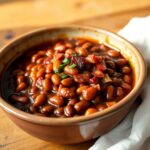
Homemade Baked Beans Recipe
- Total Time: 3 hours 15 minutes
- Yield: 6–8 1x
- Diet: Vegetarian
Description
A classic comfort dish that never goes out of style. These homemade baked beans are sweet, smoky, and deeply flavorful. Made with tender navy beans, molasses, smoky bacon, and a perfectly seasoned tomato-based sauce, this recipe brings a slow-cooked richness that’s far beyond anything you’ll find in a can. Perfect for potlucks, BBQs, or as a make-ahead meal, this is the baked bean recipe you’ll turn to again and again.
Ingredients
- 1 lb dried navy or great northern beans
- 6 slices thick-cut bacon, chopped
- 1 medium onion, finely chopped
- 3 garlic cloves, minced
- 1/3 cup molasses
- 1/4 cup brown sugar
- 3 tablespoons tomato paste
- 2 teaspoons Dijon mustard
- 1 tablespoon apple cider vinegar
- 1 teaspoon smoked paprika
- 2–3 cups water or broth
- Salt and black pepper, to taste
Instructions
- Soak beans overnight in plenty of water or use a quick soak method. Drain and rinse.
- Cook beans in a large pot of fresh water for about 45–60 minutes, or until just tender. Drain and set aside.
- In a Dutch oven, cook bacon until crisp. Remove and set aside. Sauté onion in the bacon fat until translucent, then add garlic and cook briefly.
- Stir in molasses, brown sugar, tomato paste, mustard, vinegar, smoked paprika, salt, and pepper. Add water or broth and stir well.
- Return bacon to the pot and add the cooked beans. Mix well.
- Cover and bake at 300°F for 3–4 hours, checking occasionally and adding more water if needed. For stovetop cooking, simmer gently for 2–2.5 hours.
- Adjust seasonings and serve warm.
Notes
- Canned beans can be used as a shortcut—just reduce cooking time.
- Vegetarian? Skip the bacon and use olive oil with a dash of liquid smoke.
- For extra richness, swap water for broth.
- Taste and adjust sweetness and acidity toward the end of cooking.
- Prep Time: 15 minutes
- Cook Time: 3 hours
- Category: Side Dish
- Method: Baked/Stovetop
- Cuisine: American
Nutrition
- Serving Size: 6–8
- Calories: 280
- Sugar: 12g
- Sodium: 420mg
- Fat: 7g
- Saturated Fat: 2g
- Unsaturated Fat: 5g
- Trans Fat: 0g
- Carbohydrates: 42g
- Fiber: 9g
- Protein: 12g
- Cholesterol: 12mg

